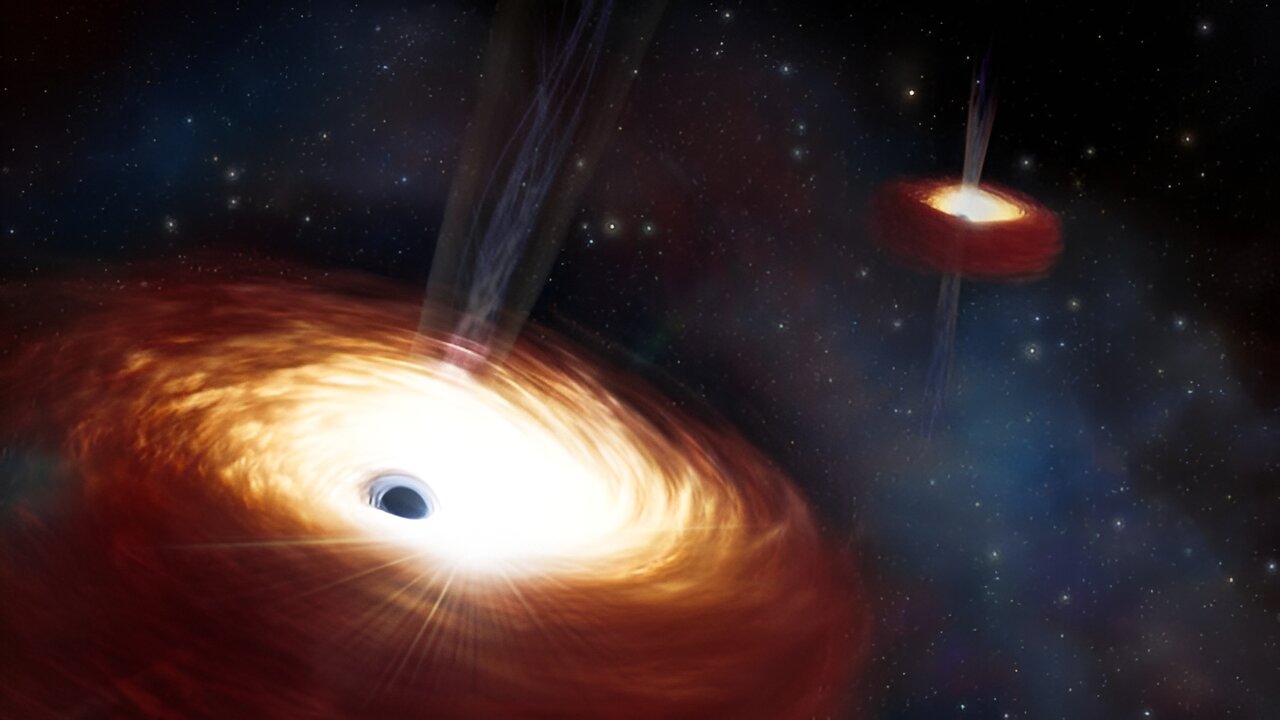Scientists have been able to determine the mass of a pair of giant black holes that are located in the center of one of the galaxies. This study will help to understand whether their merging into one object will ever happen.

Measuring the masses of black holes
Using archived data from the Gemini North telescope, a team of astronomers measured the mass of a pair of supermassive black holes. The merging of such objects is a phenomenon that has long been assumed, but has never been observed. New observations provide clues as to why such an event is unlikely in the universe.
Almost every massive galaxy contains a supermassive black hole at its center. When two galaxies merge, objects in their centers can form a binary system, that is, they are in a connected orbit with each other. There is an assumption that eventually they should merge, but there is still no confirmation of this. Discussions about the possibility of this phenomenon have been going on for several decades.
Investigation of black hole mergers
Recently, a team of astronomers used data from the Gemini North Telescope in Hawaii, which is part of the Gemini International Observatory operated by the NOIRLab of the National Institute of Physics, to analyze a supermassive binary black hole located in the elliptical galaxy B2 0402+379. This is the only such system that has been distinguished with sufficient detail to see both objects separately. The distance between the components in it is the smallest of the measured ones — only 24 light years.
The team estimates that the mass of the binary black hole is 28 billion times that of the Sun, making this pair the heaviest such formation ever measured. This study not only provides valuable context for the formation of a binary system and the history of its host galaxy, but also confirms the long-standing theory that the mass of a supermassive binary black hole plays a key role in containing a potential merger.
Understanding how this dual system formed can help predict whether and when it will merge. Several clues indicate that the pair was formed as a result of the merger of several galaxies. Firstly, B2 0402+379 is a “fossil cluster”, that is, the result of the merger of stars and gas of an entire cluster of galaxies into one massive one. In addition, the presence of two supermassive black holes, combined with their large total mass, indicates that they were formed as a result of the merger of several smaller objects from different star systems.
Predictions about the future of the system
After a galactic merger, supermassive black holes do not collide head-on. Instead, they begin to circle one another, gradually losing energy. The pair gets closer and closer until they are light years apart, where gravitational radiation takes over and they merge.
This process has been directly observed in pairs of stellar-mass black holes — the first case was recorded in 2015 due to the detection of gravitational waves, but it has never been seen in the centers of galaxies.
Thanks to new knowledge about the extremely large mass of the system, astronomers have come to the conclusion that in order to slow down the orbital motion of the binary system so that they get so close, an extremely large number of stars would be needed. In the process, the black holes seem to have ejected almost all the matter in their surroundings, leaving the core of the galaxy without stars and gas. Having no more material to further slow down the pair’s orbit, their merger stopped at the final stage.
It is possible that the pair will be able to cover this last distance with the help of another galaxy merger, which will breathe additional material into the system, or perhaps a third black hole, to slow down the orbit of the pair so that it can merge. However, given the status of B2 0402+379 as a “fossil” cluster, another galaxy merger is unlikely.
According to phys.org
Follow us on Twitter to get the most interesting space news in time
https://twitter.comne/ust_magazine


